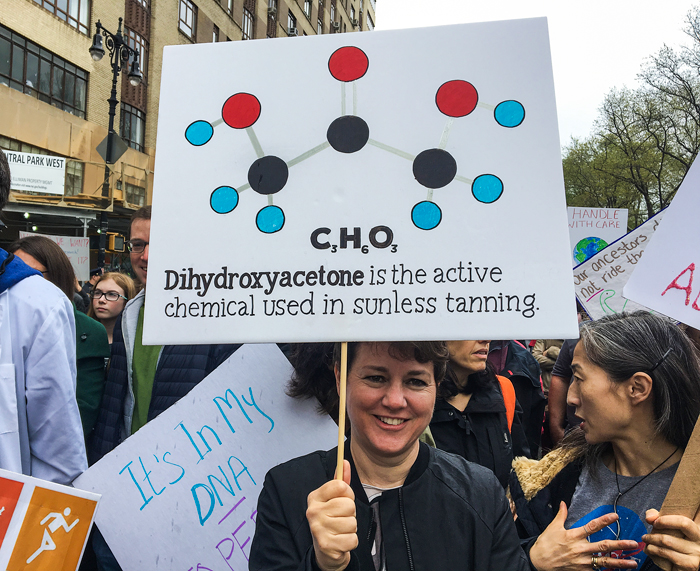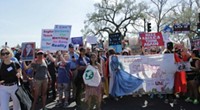Advertisement
Grab your lab coat. Let's get started
Welcome!
Welcome!
Create an account below to get 6 C&EN articles per month, receive newsletters and more - all free.
It seems this is your first time logging in online. Please enter the following information to continue.
As an ACS member you automatically get access to this site. All we need is few more details to create your reading experience.
Not you? Sign in with a different account.
Not you? Sign in with a different account.
ERROR 1
ERROR 1
ERROR 2
ERROR 2
ERROR 2
ERROR 2
ERROR 2
Password and Confirm password must match.
If you have an ACS member number, please enter it here so we can link this account to your membership. (optional)
ERROR 2
ACS values your privacy. By submitting your information, you are gaining access to C&EN and subscribing to our weekly newsletter. We use the information you provide to make your reading experience better, and we will never sell your data to third party members.
Environment
Chemists march for science
Practitioners, professors, students, and fans join with throngs in support of science
by Sarah Everts, Cheryl Hogue, Lisa Jarvis, Jyllian Kemsley, and Michael McCoy
April 23, 2017

Your Photos
Many scientists shared their photos from the march with C&EN using the hashtags #chemistsmarch and #sciencemarch—see some of our favorites in this photo gallery
Chemists, chemistry students, and fans of chemistry took to the streets on April 22 along with hundreds of thousands of others in support of science across the U.S. and the world. Billed as a nonpartisan event, the March for Science drew demonstrators who touted their love for science. More than 500 marches took place around the globe.
Many marchers in the U.S. called for the government to continue funding research in the face of calls by many in Congress to cut nondefense spending and proposals by President Donald J. Trump to slash federal support for many areas of science. Some criticized Trump’s climate change policies, including his plan to eliminate all of the Environmental Protection Agency’s climate programs.
The march in Washington, D.C., attracted participants from all over the country. One was Monica Ohnsorg, a chemistry graduate student at the University of Minnesota, who pulled an all-nighter to finish a homework set before catching a 6 AM flight to the nation’s capital.
Ohnsorg said she came to Washington to attend her first demonstration because she sees the future of science in collaborative research such as the National Microbiome Initiative and the Brain Research through Advancing Innovative Neurotechnologies (BRAIN) Initiative. “We have to let the government know that these initiatives need to be continued, the funding need to be continued,” she told C&EN.
In Chicago, Laure Dussubieux, a chemist at the Field Museum who brought her family to the march, said she wanted her two daughters to understand that science permeates every aspect of life. Moreover, she’s worried about the current climate for science in the U.S.
“I hope this march is going to show people that science is important and is worth funding,” she said.
A Chicago-based chemist with EPA who requested not to be named said she marched to support the important work of the agency. “Science is everything, and this Administration is not paying attention to the facts,” she said. But although she hoped the marches across the country would send a message to the White House, “unfortunately, I don’t think it’ll change anything,” she said.
While many scientists and science enthusiasts rallied, some researchers opted out. Some argued that organizers failed to appropriately address issues of diversity and inclusion, and others were unhappy with what they viewed as the politicization of the event.
The American Chemical Society, which publishes C&EN, officially supported the march in conjunction with its annual Chemists Celebrate Earth Day events, with the proviso that march organizers maintain a nonpartisan stance.
Scroll on to see scenes from the marches captured by C&EN reporters in Washington, D.C., Berlin, Chicago, New York City, and San Francisco. Former C&EN editor-in-chief Rudy Baum also contributed from Portland, Ore.









Credit:













Join the conversation
Contact the reporter
Submit a Letter to the Editor for publication
Engage with us on Twitter